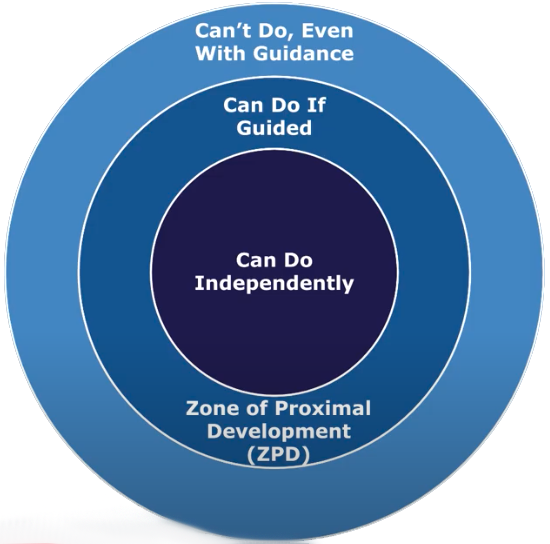How Reading Works
During our live Zoom session this week we discussed the Three Ways To Read a Book:
- Read the Pictures
- Read the Words
- Retell the Story
We demonstrated this through using the book, Stepping Stones: A Refugee Family's Journey written by Canadian author, Margriet Ruurs, with artwork by Syrian artist, Nizar Ali Badr.
This week we began to investigate how reading works by looking at the Reading Process System, Lev Vygotsky's Zone of Proximal Development (ZPD), and some brain research in regards to reading development and stamina in a lesson.
A great visual we came across to demonstrate how a reading process system works comes from Fountas & Pinnell.
Here is another visual to understand Vygotsky's ZPD:We also took a look at the BC Performance Standards for Reading. Some school districts in British Columbia are currently piloting new reporting language. Instead of the traditional Not Yet Within Expectations, Minimally Meeting Expectations, Fully Meeting Expectations, and Exceeding Expectations, this pilot is exploring the use of the language Emerging, Developing, Proficient, and Extending.
During our course this semester, we will be reading the novel, Silverwing by Canadian author, Kenneth Oppel through listening to voice recordings on SoundCloud. We started to explore the concept of loose parts this week, as well, and took a look at what we could find in our own environments. Using some manipulatives from our course kit and the loose parts we found, students were invited to choose a word from the reading this week to create using these materials.
Here is a slideshow to see the words that students chose this week:






Comments
Post a Comment